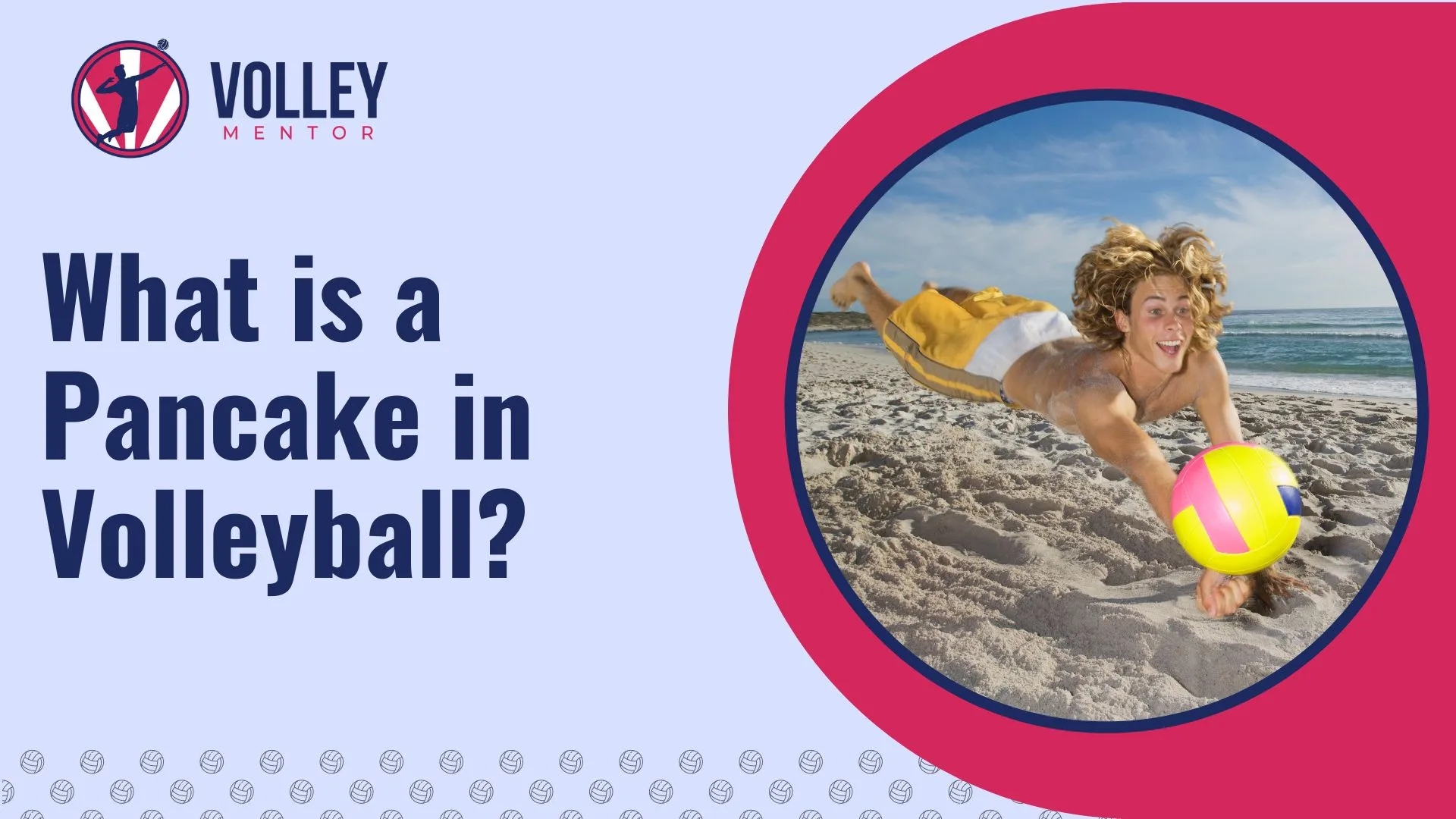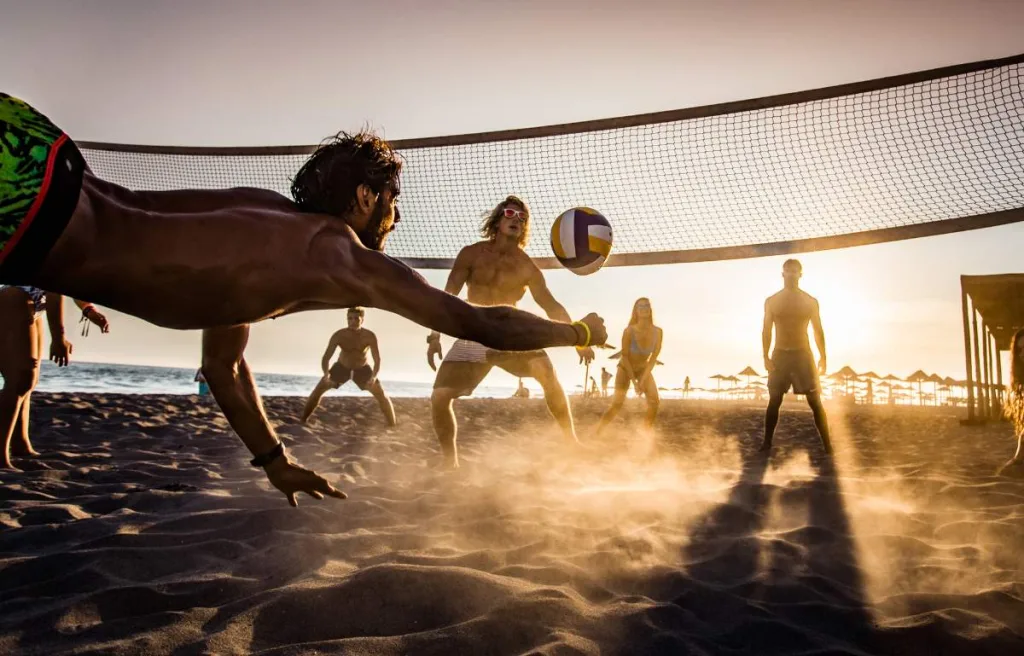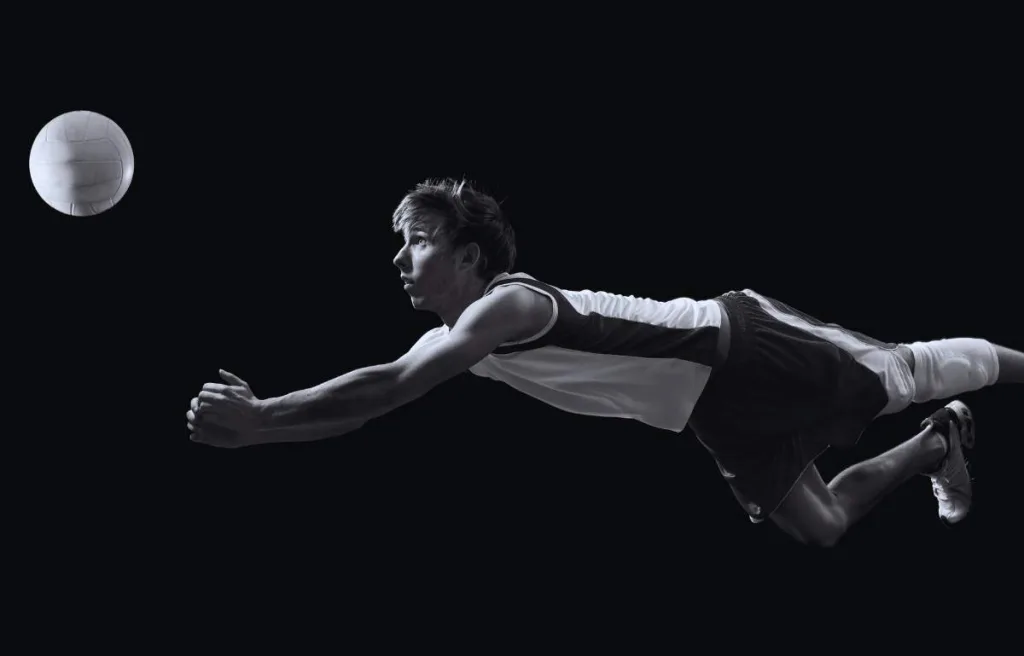Master the Volleyball Pancake: Essential Techniques and Drills

If pancakes topped with syrup and butter come to your mind after reading the title, think again!
In volleyball, a ‘pancake’ is something entirely different, yet just as exciting.

This term doesn’t refer to some breakfast option but to a game-saving move that shows a player’s quick reflexes.
Quick Answer: The volleyball pancake, or one-handed diving save, is a dynamic defensive move in volleyball used as a last resort to prevent the ball from hitting the floor.
In this guide, I will elaborate on the volleyball pancake definition and explain how to execute this move correctly.
I will also explain what’s allowed and not when you’re doing a pancake, point out some easy-to-make mistakes, and suggest some practical drills to master it in no time.
Before you start this article, check out my piece on the basics of a dig in volleyball.
It’ll give you a solid foundation to understand the concept better.
What is a Pancake in Volleyball?
The players use the pancake as a last resort in emergencies when traditional digs just can’t stop the ball.
It’s ideal for balls falling fast and far from the player, where a standard forearm pass is out of reach.
This move is called a ‘pancake’ because your hand becomes a flat surface that stops the ball from hitting the ground like a flat pancake.
A player typically performs this move by quickly diving towards the ball.
They then place one hand flat on the ground, palm facing down, to stop the ball from touching the court.
The back of the hand acts like a quick platform to make the ball bounce and keep it going.
The pancake technique works best when the ball almost touches the ground, and the player needs to move fast.
1) Rules of the Pancake in Volleyball
Knowing the rules for the pancake move in volleyball helps you use it right and avoid common mistakes.
Here’s a simple guide to these rules:
- Clean Contact: The ball must bounce cleanly off the back of your hand.
- One Contact Rule: Avoid double hits because you can’t hit the ball again immediately after a pancake.
- Timing and Hand Position: If your timing is off or you don’t position your hands correctly, the move could be considered a fault, and you might miss the ball or make illegal contact.
- No Double Pancake: Two players can’t both pancake the same ball one after the other unless it touches something else or hits the ground first.
Illegal actions during a pancake can lead to penalties, ranging from the opposing team earning a point to receiving penalty cards for more severe infractions.

2) Mental Tactics in Pancaking
Mastering the pancake in volleyball is not just a physical skill, but it also involves mental sharpness.
I have compiled a few points to explain the crucial mental tactics to execute it.
3) Physical Execution in Pancaking
While the mental aspect is critical, the physical execution of the pancake is what makes it effective on the court.
Here, I will focus on the physical requirements and skills necessary for effective pancaking.
How to Pancake in Volleyball? (Step by Step Procedure)
The pancake in volleyball is a dramatic, last-resort technique used to save the ball when all other methods seem impossible.
This move requires agility, precise timing, and quick thinking.
Let me describe each step of pancaking in detail so that you can master this move and use it effectively when required:
Common Mistakes and How to Avoid Them
In perfecting the pancake move, players often encounter a few hurdles.
Here’s how to identify and correct them:

Volleyball Pancake Drills
You must have heard this phrase, “Practice makes a man perfect.”
The same applies to the pancaking in volleyball if you want to master it.
The best approach to becoming pro at it is to practice through specific drills.
These drills focus on enhancing your timing, positioning, and execution of the pancake.
You will see tons of drills for it online, but I have picked out the best 3 for you.
Following these carefully chosen drills enhances your pancaking skills and plays a crucial role in helping you avoid shanking.
1) Partner Hand Drop Exercise
This drill is best suited for beginners and helps them understand the feel and timing of the pancake.
It contains straightforward steps listed below:
- Pair up with a partner.
- Lie down with your hand flat on the ground.
- Your partner gently drops the ball on your hand from above.
- Practice this at least ten times, then switch roles
2) Ball Tossing for Trajectory Understanding
This drill is my favorite as it sharpens a player’s skills in predicting the ball’s landing spot.
The steps are listed below:
- Pair up with a teammate. You lie on the ground while your teammate stands a few feet away.
- Your teammate then gently tosses the ball toward you.
- Try to predict where the ball will land and place your hand in that spot as if performing a pancake.
- Practice this move 8-10 times, then switch roles with your teammate to give both of you a chance to practice.
3) Diving Progression Technique
This drill is a bit advanced for beginners, but if practiced well, it could be the best one to master the dive and the coordination needed for the pancake.
I am listing the steps below:
- Start kneeling on the court, which positions you closer to the ground and ready for the dive.
- Have a partner or coach stand a short distance away with a volleyball.
- Your partner tosses the ball slightly away from you.
- Practice diving towards the ball, extending your arm, and flattening your hand as you would for a pancake.
- Start with closer tosses and gradually increase the distance as you become more comfortable with the diving motion.
- Repeat this process, focusing on smooth, controlled dives and accurate hand placement.
Conclusion
In short, the volleyball pancake is an incredible move that can save the game in tight spots.
Knowing how to do it right and understanding the rules is essential.
Keep practicing the drills I talked about, and you’ll get better at it.
Remember, doing a pancake well needs quick thinking and working well with your team.
Use this move smartly, and it can help you to outrank your opponents.
